Bananas: From the Bunch to Your Breakfast
Where do bananas come from?
Bananas originated in the Malay Archipelago in Southeast Asia. Today they are grown in tropical regions across the globe, from South and Central America to India, China and Africa.
Bananas grow in hot, tropical climates. Banana plants look like trees but are actually giant herbs related to lilies and orchids. The plant grows from a root clump (rhizome), similar to a tulip bulb. There are over 500 types of bananas! People cultivate mostly cooking bananas and plantains (the starchy cousins of the sweet banana). Over 500 million people depend on the banana trade to support themselves and their families.
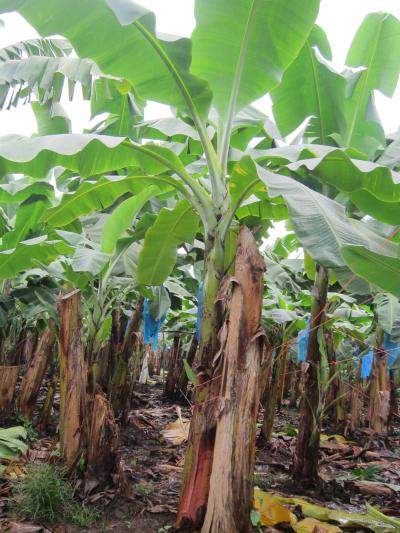
The dessert banana, also called the Cavendish, is the most popular type of banana in North America and Europe. When Americans were introduced to bananas in the 1880s, they were considered an exotic luxury and eaten with a knife and fork. Today, the average person in the U.S. eats more than 75 bananas a year. Tarantulas like to hide in banana leaves.
Banana plants grow quickly and can reach their full height of 20-40 feet in only 9 months. After growing for about 6-8 months, the plant develops a nice crown of leaves. Then a flowering stem emerges from the top, and a large bud begins to develop.
As the bud unfolds, it reveals double rows of tiny flowers. Each of these flowers will become an individual banana, or a “finger.” Each row of bananas is call a “hand” and is made up of 14 to 20 fingers. Each stem grows 9 to 12 hands, which means that a single banana plant can produce up to 240 bananas.
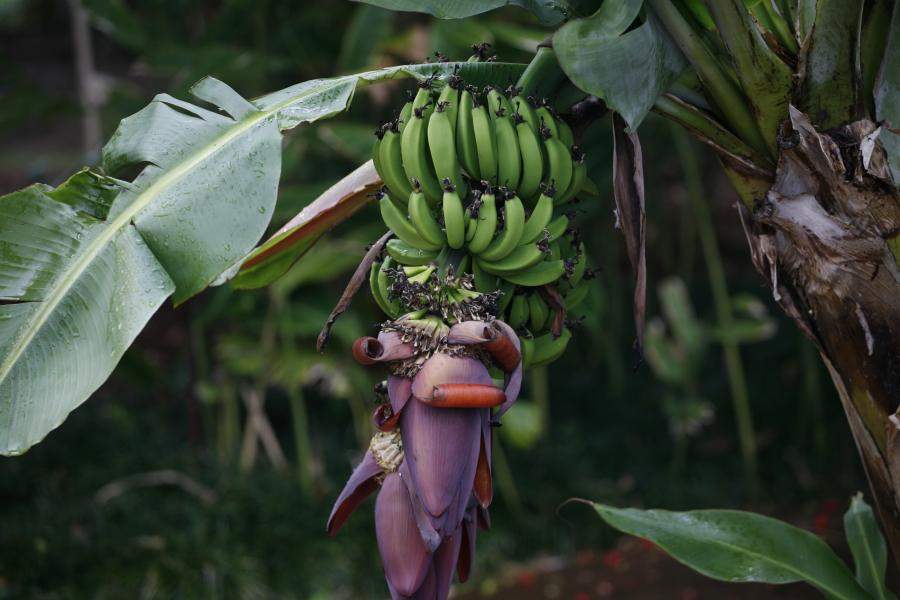
Bagging the Fruit
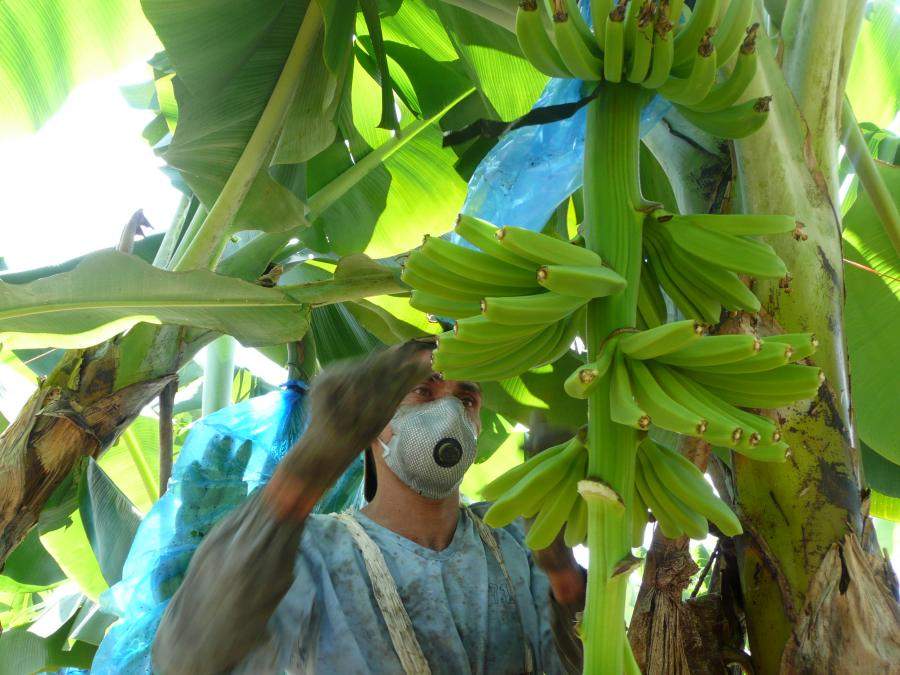
About 14 days after the stem has emerged, the weight of the growing bananas causes the stem to hang upside down. At this stage, many farmers cover the fruit with a bag to help protect it from insects and sun damage. Farmers also support the plant by tying it to neighboring plants with twine. This helps prevent the plant from toppling over from the weight of the bananas.
Harvesting
About 12 weeks after bagging, the green-colored fruit is ready to harvest. In order to harvest the bananas, one worker cuts the stem from the plant while another stands underneath to catch the falling stem on his shoulder. After one growth cycle, the banana plant will be cut down and a new plant will grow from the root clump (rhizome) left behind.
Once cut from the plant, the bananas are carried to the processing plant by horse or by workers.
After harvest, the plastic bags are recycled on Rainforest Alliance certified banana farms.
Processing
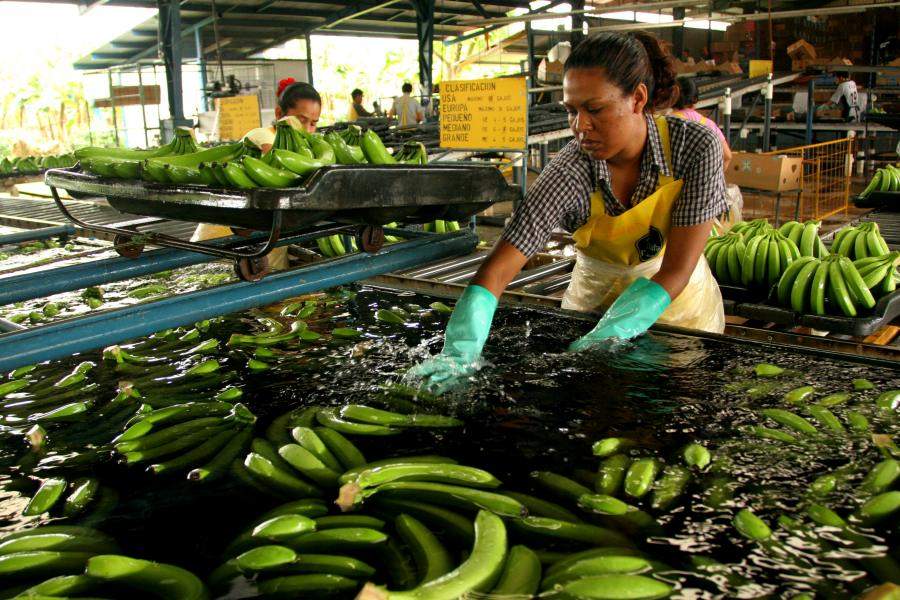
At the processing plant, workers remove bananas from their stems by hand and break them into smaller clusters. The workers must be very careful to cut neatly and accurately in order to prevent breaking the skin, which can cause rotting.
The workers submerge the bananas in large tanks of cold water. The cool water lowers the temperature of the bananas and washes off sap and latex from the cut stems.
Next, the bananas get stickers. Workers carefully pack the bananas in boxes so they do not bump against each other. This helps to minimize bruising before they arrive at their destination.
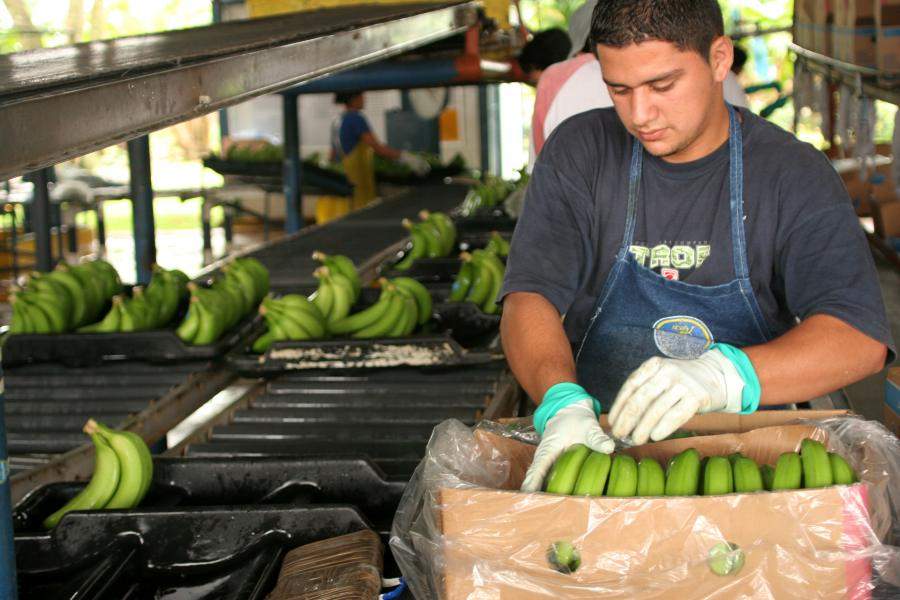
Finally, the boxes are carefully loaded into refrigerated ships, called reefers. The ship’s storage area is kept cold enough to prevent the bananas from ripening, a technique called “putting the bananas to sleep.”
Upon arrival, the bananas are placed into ripening rooms for 3 to 8 days before being brought to the markets. The bananas are loaded into a truck and shipped off to be offered to banana lovers on grocery shelves.
Rainforest Alliance Certification
Banana farmers that wish to be certified through the Rainforest Alliance must are required to:
- Protect ecosystems
- Conserve water, soil and forests
- Provide decent working conditions for all workers, safety training and protective equipment
- Maintain positive relationships with local communities
- Establish an integrated system of waste management
